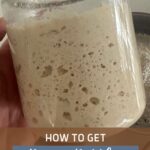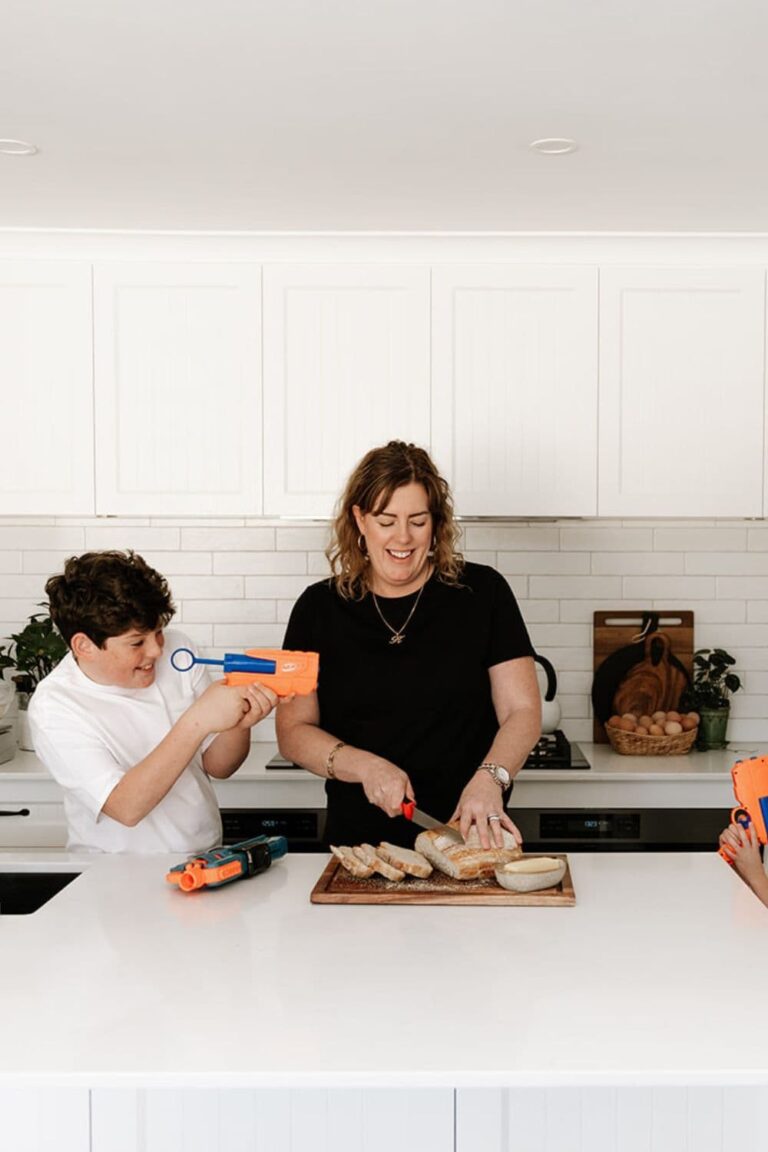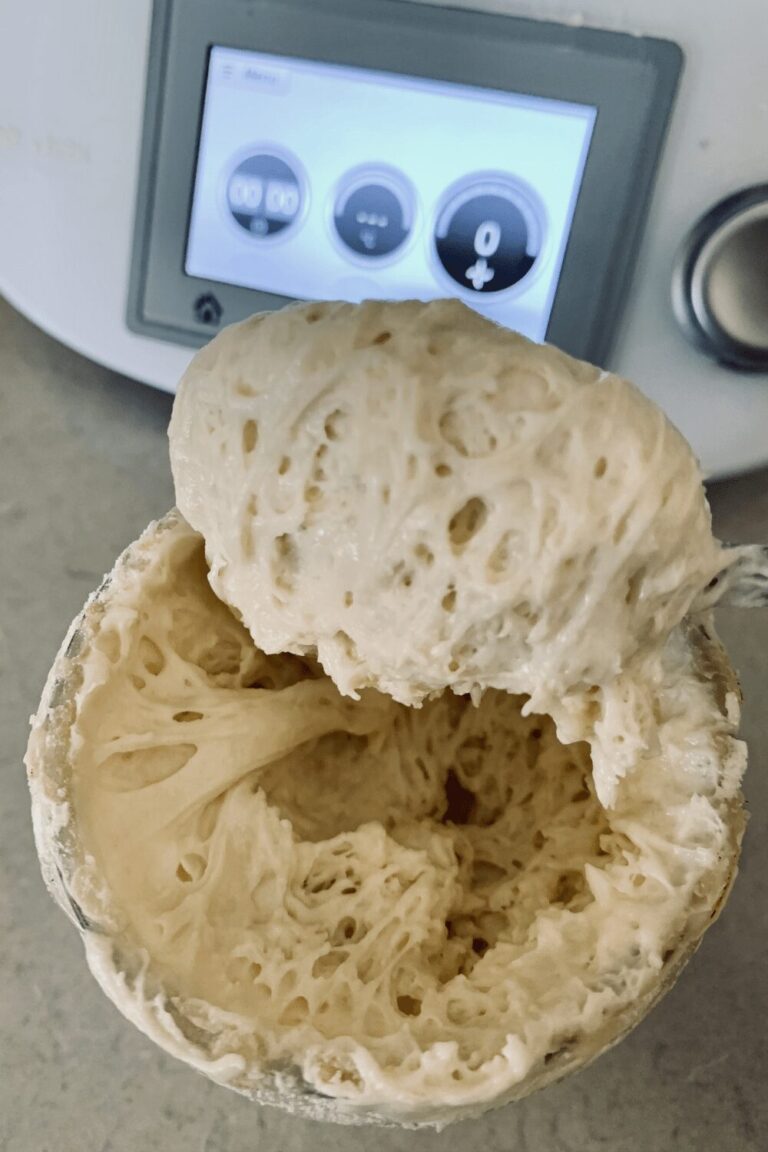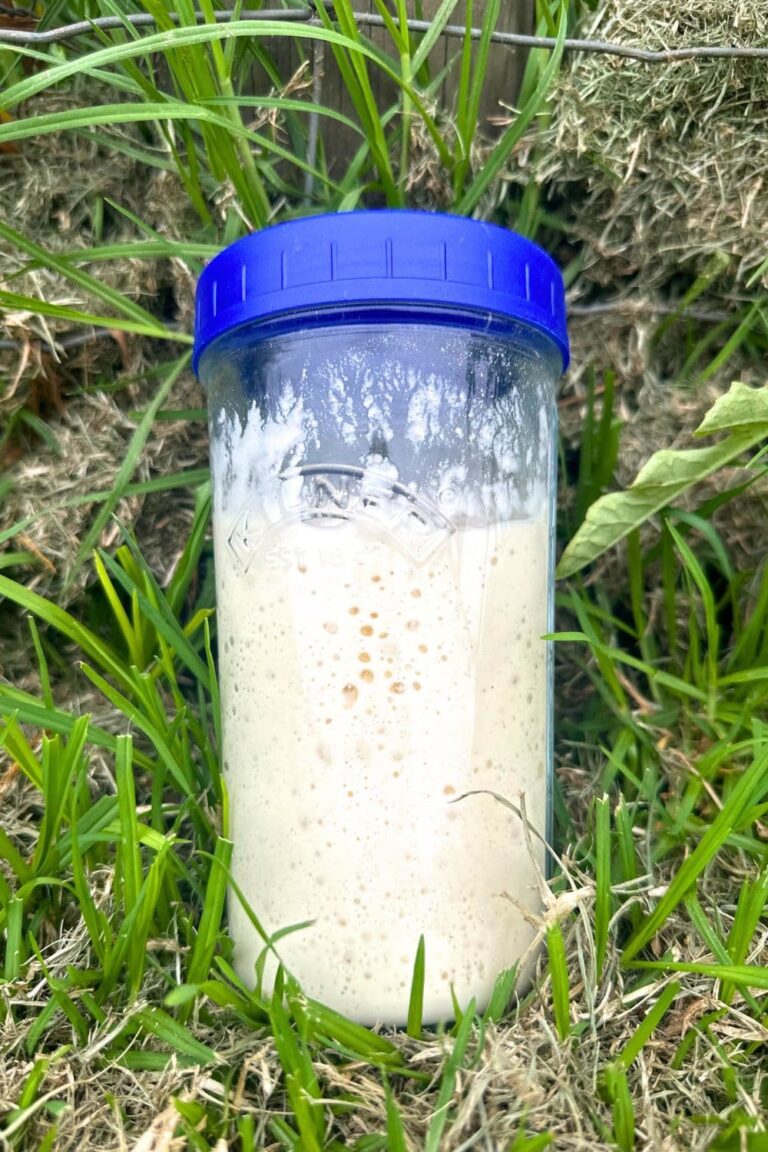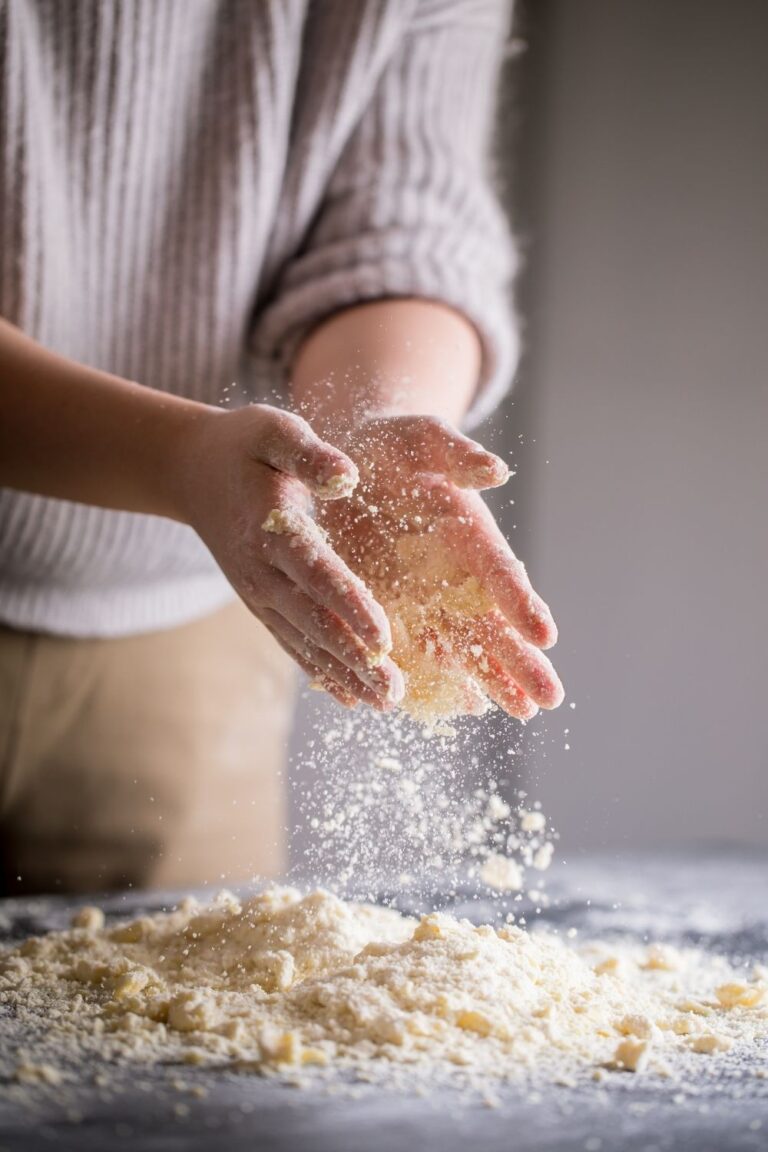How To Get Bigger Bubbles In Your Sourdough Starter
This post may contain affiliate links.
Are bigger bubbles really better when it comes to sourdough starter? And is there anything you can do to get your wild yeast to produce those big beautiful bubbles squished against the side of your jar?
The thing is, bigger is not necessarily better when it comes to sourdough starters. In fact, the bubbles your sourdough starter produces are really just a result of the type of flour you're feeding your starter, as well as the level of hydration in your jar.
A starter with larger bubbles will not necessarily produce a better loaf of sourdough bread. However, a starter with big bubbles might be more resilient and go longer without a feed.
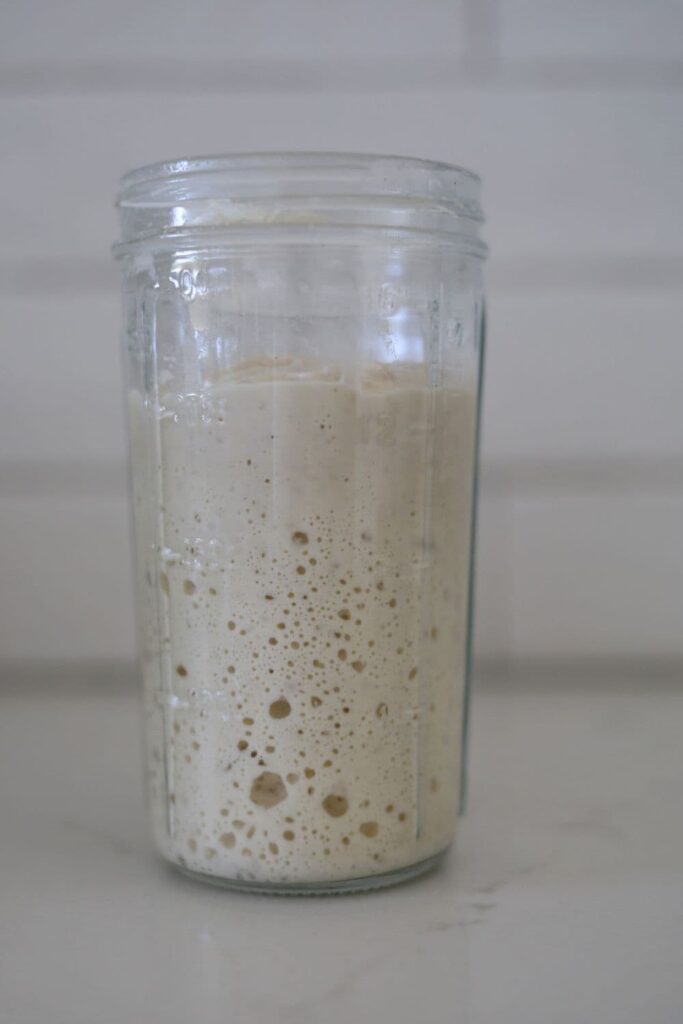
Do Bigger Bubbles Mean Better Sourdough?
No, bigger bubbles in your sourdough starter do not necessarily translate to a better loaf of bread than that made with a starter with tiny bubbles.
As long as your starter is doubling (or even tripling) in a timely manner after being fed, the size of the bubbles don't really matter too much. What you're looking for is activity and fermentation. Bubbles of any kind are an indication that this is happening inside your jar.
So many people say to me, oh my starter doesn't bubble at all, but it doubles after feeding. This doesn't really make sense, since for a sourdough starter to double, it must have bubbles of gas that push it higher in the jar (you can read a more detailed explanation of the science behind sourdough starters here).
So as long as your sourdough starter is actually doubling after being fed, there shouldn't be an issue with it being able to rise your dough during bulk fermentation. Remember to put an elastic band around the your jar to mark the starting level of your sourdough starter. That way you'll be able to clearly see when it doubles.
You can read more about understanding when your starter is ready to bake with here.
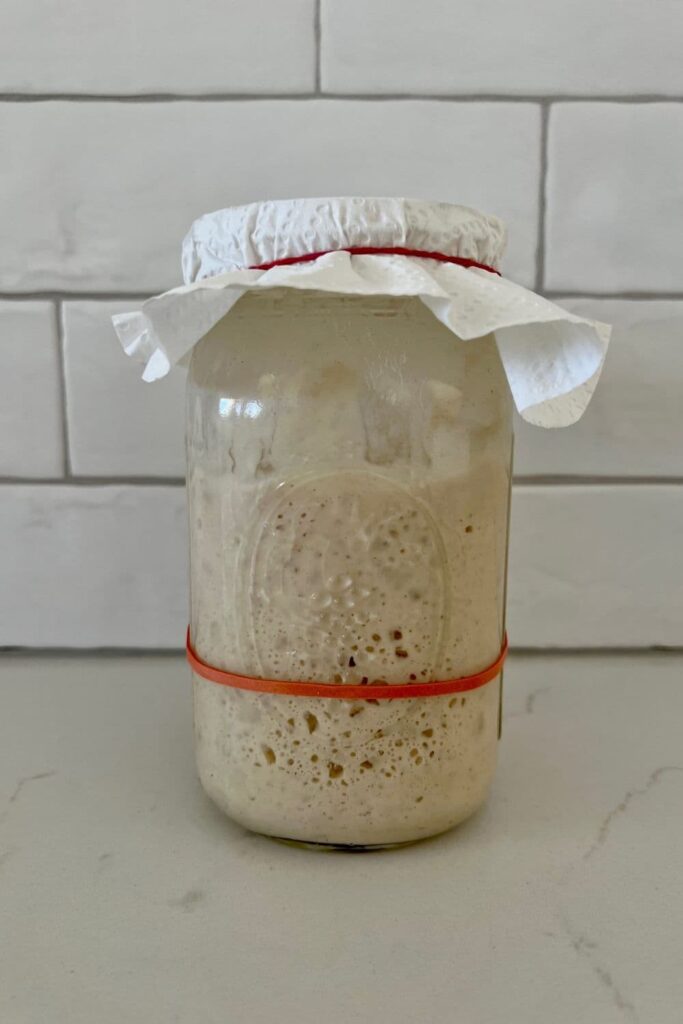
Why Does My Sourdough Starter Only Create Tiny Bubbles?
Your starter will only produce tiny bubbles if it's thinner or being fed a lower protein flour. Thinner sourdough starter is generally higher in hydration and thus the gluten network isn't as strong as it would be in a lower hydration starter.
This weaker gluten network allows the bubbles to escape faster, rather than supporting the gas inside the gluten strands, making the larger bubbles you see in a thick, mousse like starter.
So, if your sourdough starter is runny, it won't produce big robust bubbles and will appear to fall a lot faster than a thicker starter.
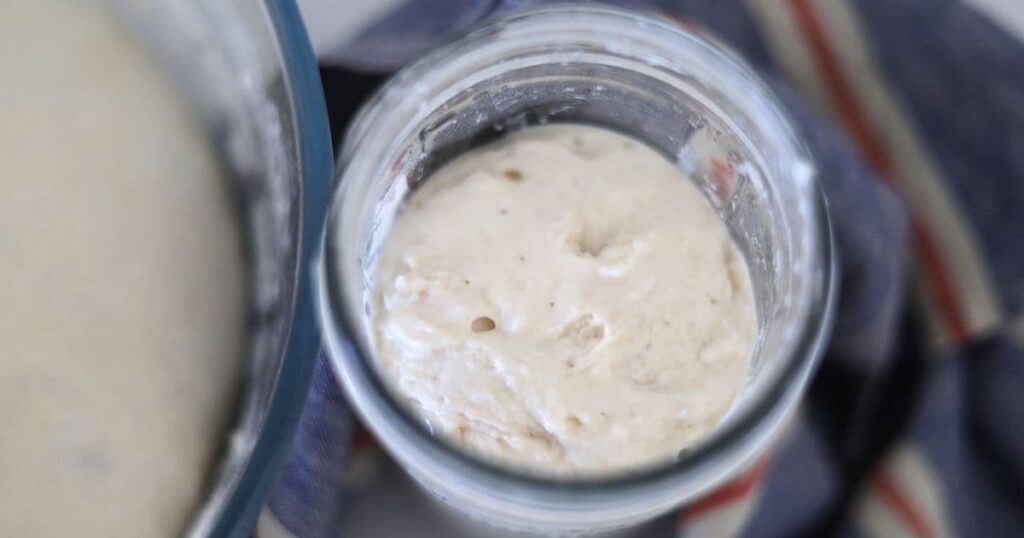
Are There Any Benefits To Bigger Bubbles In Sourdough Starter?
While bigger bubbles in sourdough starter won't necessarily produce better sourdough, they may ensure that your starter is more resilient and can go longer between feeds.
Let me explain. Because larger bubbles are generally caused by a lower hydration starter, the sourdough starter will be able to go longer between feeds which makes it more resilient to mold and may be easier to take care of on the kitchen counter than a higher hydration starter (which needs feeding more regularly because it will ferment faster).
You can read my guide to understanding sourdough hydration here.
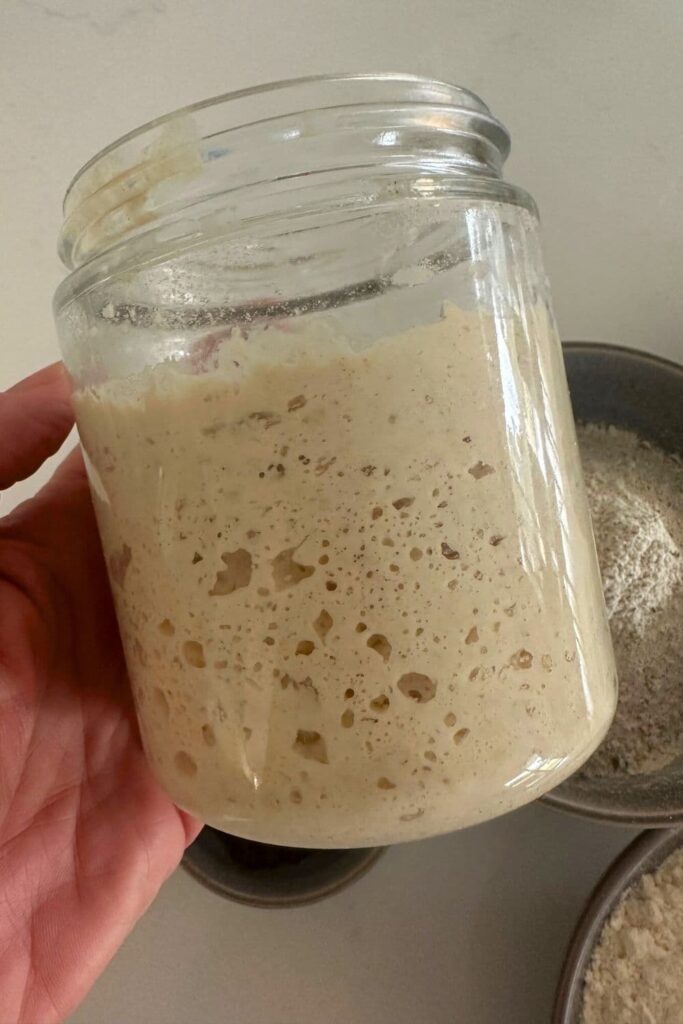
How To Get Bigger Bubbles In Your Sourdough Starter?
There are several things you can do to make your sourdough starter create bigger bubbles and look more like those mousse-like starters you see on social media. Here are the best ways get bigger bubbles in your sourdough starter:
- Lower the hydration of your sourdough starter. Feed your starter 20% less water than flour (for example, feed 50g of sourdough starter with 50g of flour and 40g of water.
- Feed your sourdough starter with a high protein bread flour, rather than all purpose flour.
- Add some rye flour to your sourdough starter - this is a great way to strengthen your sourdough starter and introduce some whole grains into your wild yeast colony. Rye starters will often produce those big, mousse like bubbles.
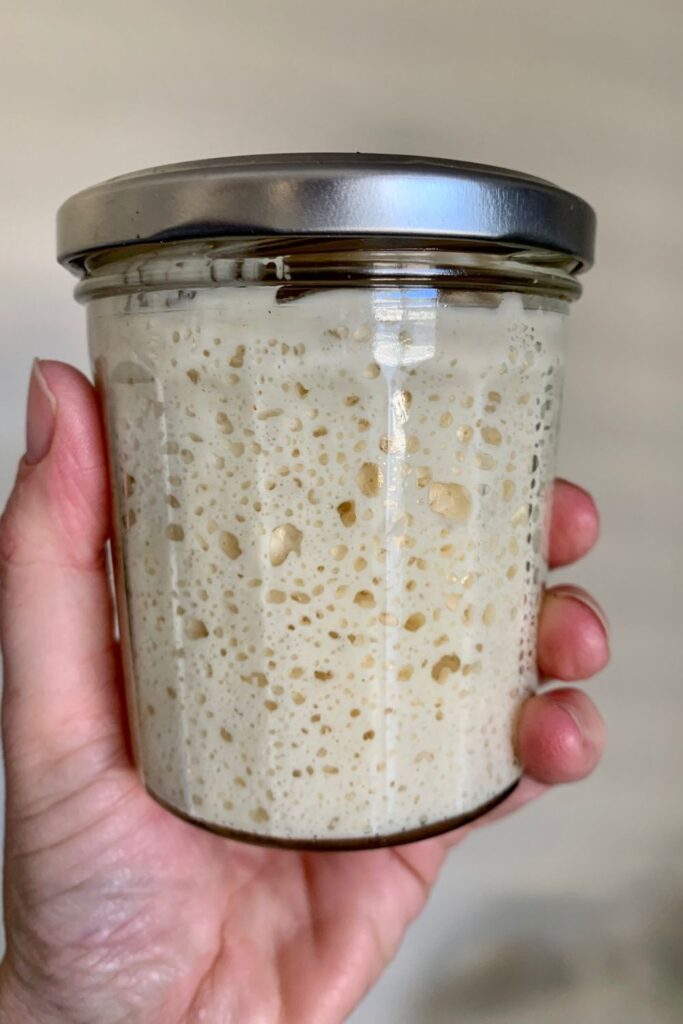
Why Do The Bubbles In My Sourdough Starter Look Foamy & Soapy?
Sometimes the top of your sourdough starter will look foamy or the bubbles on the top will be big and look kind of like the bubbles you blow with bubble mixture and a wand.
This is not bad - remember, bubbles indicate activity and fermentation and this is the whole point of a sourdough starter!
Foamy, soapy bubbles on the top of your starter generally happen when your starter is a bit on the thin side but is very active. Often your starter will produce these big soapy bubbles along with a big rise. Your starter will often smell acetone like when this happens, indicating it's hungry.
My own sourdough starter tends to produce these big soapy bubbles when it's warm in my kitchen and it rises quite quickly. Even when it falls, the big clear bubbles remain on the surface - it's actually really fascinating to see!
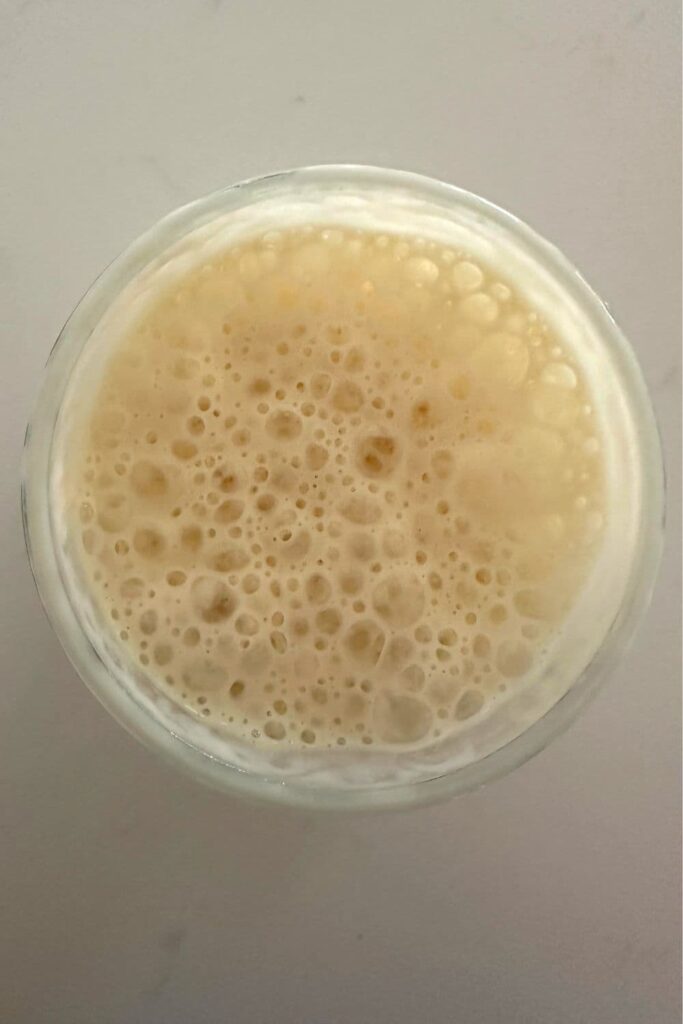
What Should The Bubbles in Sourdough Starter Look Like?
The truth is, just like sourdough bread, the bubbles in your sourdough starter don't really have to look a certain way. They could be larger or smaller, depending on the hydration of your starter, as discussed above. All of the photos in this post are the same sourdough starter - just in different jars, fed with different flour and different hydration ratios.
This guide to what sourdough bread actually looks like discusses the fact that sourdough bread comes in many forms and iterations, just like sourdough starters.
I think the main thing to remember is that you need to get in touch with the rhythm of your sourdough starter and become accustomed to the way it behaves. Then learn how to manipulate the starter to do what you want it to do!
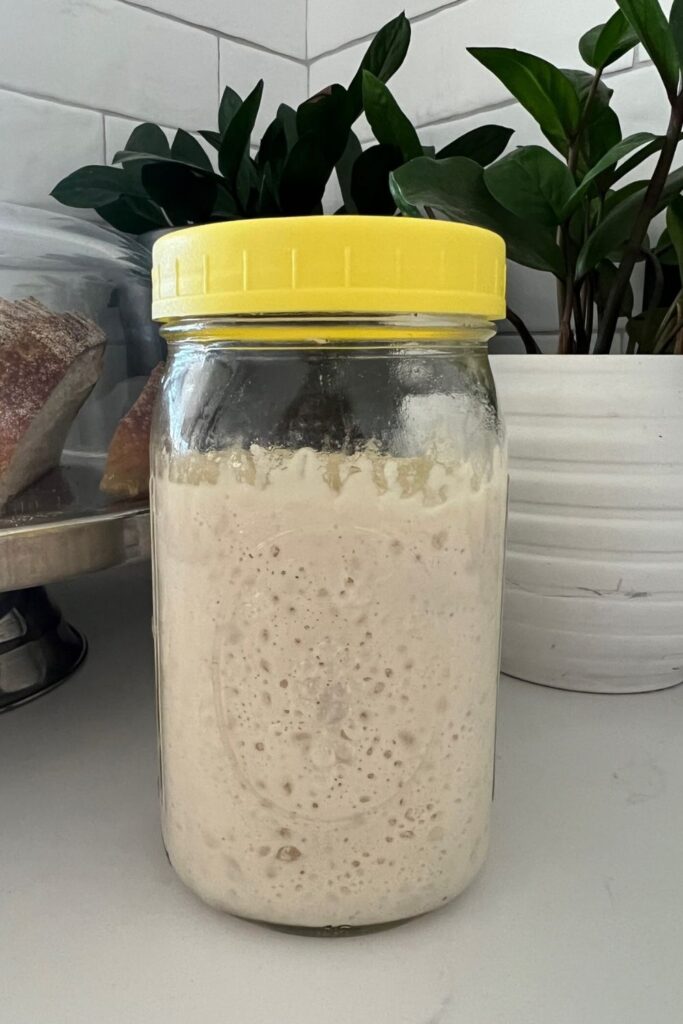
Why Is My Sourdough Starter Bubbly But Not Actually Doubling?
Your sourdough starter will start to bubble in the first few days of you mixing together some flour and water. It may not actually double for a little while though. Some sourdough starters double within 24 hours, others take a few weeks of feeding and coaxing.
The truth is, if your starter is bubbling, then it's showing that there is signs of fermentation. If it's not doubling (or even tripling) then it's not ready to bake sourdough with. Give it more time to develop and mature. After all, sourdough is the ultimate teacher of patience, am I right?
Sourdough Resources
If you're just beginning your sourdough journey (and wanting to make a sourdough starter) or looking for more support to help your sourdough starter thrive, you might find these resources helpful:
- Common Sourdough Starter Questions (and answers)
- Sourdough Glossary
- Should You Clean Your Sourdough Starter Jar?
- Why You Must Discard Your Starter

